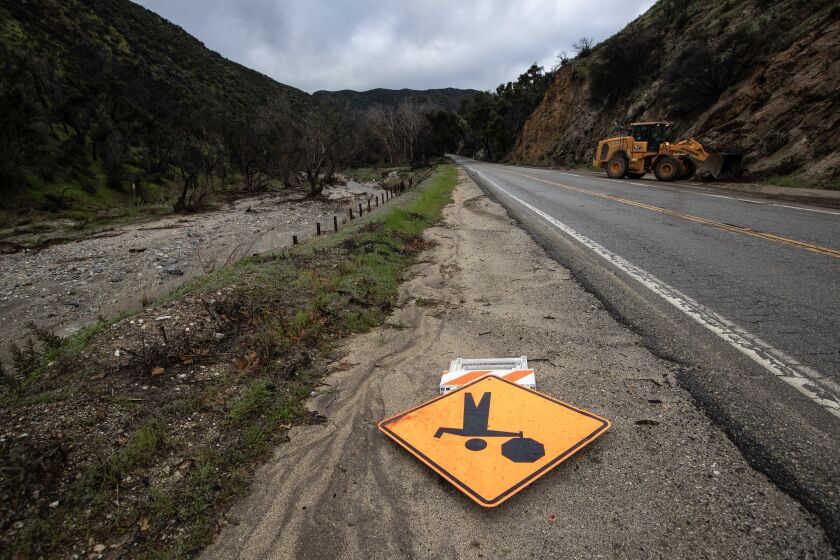Cities Under Siege: The Devastating Effects Of Dangerous Climate Whiplash

Table of Contents
Increased Frequency and Intensity of Extreme Weather Events
Climate whiplash manifests as a rapid succession of contrasting extreme weather events, impacting cities in profound ways. This heightened frequency and intensity are directly linked to climate change, and the consequences are becoming increasingly severe.
Heatwaves and Their Urban Impact
Urban heat islands, exacerbated by climate change, amplify the effects of heatwaves. This leads to:
- Increased mortality rates: Vulnerable populations, including the elderly and those with pre-existing health conditions, are particularly at risk. Heatstroke and cardiovascular complications are common causes of death during prolonged heatwaves.
- Strain on energy grids and infrastructure: Increased demand for air conditioning during heatwaves can overwhelm power grids, leading to blackouts and disruptions in essential services. Aging infrastructure is often ill-equipped to handle the extreme temperatures.
- Exacerbation of air pollution problems: Heat intensifies the formation of ground-level ozone, worsening air quality and posing further health risks to urban residents.
- Examples: Chicago experienced record-breaking temperatures in 2012, resulting in numerous heat-related deaths. Similarly, London's 2022 heatwave saw a surge in hospital admissions and widespread disruption.
Flash Floods and Urban Infrastructure
Intense rainfall events, characteristic of climate whiplash, often overwhelm urban drainage systems, resulting in:
- Overwhelmed drainage systems and sewage overflows: Outdated infrastructure struggles to cope with the volume of water, leading to widespread flooding and contamination.
- Damage to transportation networks and critical infrastructure: Roads, bridges, and public transportation systems are frequently damaged or rendered unusable, disrupting daily life and hindering emergency response.
- Displacement of residents and economic losses: Flooding causes significant property damage, displacement of residents, and substantial economic losses for businesses and municipalities.
- Case studies: Houston's vulnerability to flash floods is well-documented, with Hurricane Harvey in 2017 causing catastrophic damage. Mumbai, with its dense population and inadequate drainage, also experiences frequent and devastating flash floods.
The Cascade Effect of Extreme Weather
Climate whiplash often creates a domino effect. For example:
- A severe wildfire can deplete vegetation, leaving hillsides vulnerable to subsequent mudslides during heavy rainfall.
- A drought can weaken trees, making them more susceptible to damage from strong winds, leading to further infrastructure disruption.
- Coastal erosion caused by storms can leave communities more exposed to subsequent flooding events.
The Socioeconomic Impacts of Climate Whiplash
The consequences of climate whiplash extend far beyond environmental damage, significantly impacting urban societies and economies.
Disproportionate Impact on Vulnerable Communities
Low-income neighborhoods and marginalized groups are disproportionately affected due to:
- Limited access to resources and support: These communities often lack access to adequate housing, healthcare, and emergency services, making them more vulnerable during and after extreme weather events.
- Increased health disparities and social inequalities: Climate whiplash exacerbates existing health disparities and social inequalities, further marginalizing already vulnerable populations.
- Examples: Studies consistently show that low-income communities in many cities experience higher rates of displacement and health problems due to climate-related events.
Economic Disruptions and Costs
Climate whiplash inflicts substantial economic burdens on cities:
- Damage to property and infrastructure: Repairing damaged infrastructure and replacing lost property represents massive financial costs for municipalities and individuals.
- Business closures and job losses: Businesses, particularly small and medium-sized enterprises (SMEs), can be severely impacted, leading to job losses and economic hardship.
- Increased insurance premiums and financial burdens on municipalities: The increased frequency of extreme weather events leads to higher insurance premiums and increased financial burdens on city governments.
- Long-term economic consequences: Repeated extreme events can lead to long-term economic decline, hindering urban development and affecting future prosperity.
Mitigation and Adaptation Strategies for Cities
Addressing the devastating impacts of climate whiplash requires a multi-pronged approach combining mitigation and adaptation strategies.
Investing in Resilient Infrastructure
Cities must invest in infrastructure capable of withstanding extreme weather events:
- Improved drainage systems, flood defenses, and heat-resistant buildings: Upgrading infrastructure to handle increased rainfall and extreme temperatures is crucial.
- Investing in green infrastructure: Urban forests, green roofs, and permeable pavements can help mitigate the urban heat island effect and reduce flooding.
- Upgrading energy grids: Modernizing energy grids to ensure reliability during heatwaves is essential.
Developing Early Warning Systems and Emergency Response Plans
Effective early warning systems and emergency response plans are vital:
- Improved weather forecasting and communication systems: Accurate and timely warnings are crucial for enabling effective preparedness and evacuation.
- Community preparedness programs and evacuation plans: Community engagement and education are vital to ensure that residents are prepared for extreme weather events.
- Strengthening healthcare systems: Healthcare systems need to be strengthened to handle the increased demand during and after extreme weather events.
Promoting Sustainable Urban Development
Sustainable urban development is critical for mitigating climate change and enhancing resilience:
- Reducing greenhouse gas emissions: Transitioning to sustainable transportation systems and renewable energy sources is crucial for reducing the intensity of future extreme weather events.
- Implementing green building codes: Green building codes can minimize environmental impact and enhance building resilience.
- Protecting and restoring natural ecosystems: Protecting and restoring natural ecosystems such as wetlands and forests can enhance the resilience of cities to extreme weather.
Conclusion
Climate whiplash is a growing threat to cities worldwide, causing devastating damage to infrastructure, disrupting economies, and disproportionately impacting vulnerable communities. The increased frequency and intensity of extreme weather events demand urgent action. We must invest in resilient infrastructure, develop robust early warning systems, and promote sustainable urban development to build climate-resilient cities and mitigate the impacts of this escalating threat. Understanding the devastating effects of climate whiplash is crucial. Take action today to support initiatives that build climate-resilient cities and mitigate the impacts of this growing threat. Learn more and get involved by visiting [link to relevant organization 1] and [link to relevant organization 2].

Featured Posts
-
 Northeast Ohio Braces For Strong Thunderstorms
May 31, 2025
Northeast Ohio Braces For Strong Thunderstorms
May 31, 2025 -
 Banksy In Dubai A World News Report On The Inaugural Exhibition
May 31, 2025
Banksy In Dubai A World News Report On The Inaugural Exhibition
May 31, 2025 -
 Building The Good Life Strategies For Personal Growth And Well Being
May 31, 2025
Building The Good Life Strategies For Personal Growth And Well Being
May 31, 2025 -
 Elon Musks Reaction To Recent Public Criticism
May 31, 2025
Elon Musks Reaction To Recent Public Criticism
May 31, 2025 -
 Unlocking The Good Life Practical Steps To A Fulfilling Existence
May 31, 2025
Unlocking The Good Life Practical Steps To A Fulfilling Existence
May 31, 2025
